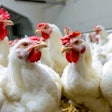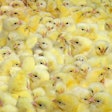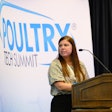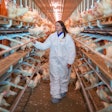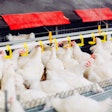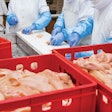
Advances in digital technologies and innovation could dramatically transform the poultry industry over the coming years, improving bird health and welfare and improving productivity and profit. However, there are some challenges that need to be overcome first.
“I’ve now substituted innovation for digital because I think we’ve moved past digital,” Gordon Butland, director, G&S Agriconsultant, explained at the the 2023 Poultry Tech Summit.
How innovation has changed over the past five years
The biggest thing that has changed innovation in the poultry industry and beyond over the past five years is COVID-19. Avian influenza has also had a dramatic impact on the industry, he added.
COVID resulted in three types of disruption: demand, logistics and staffing. We changed how we bought during the pandemic and now the recession is affecting purchases. When it comes to logistics, many countries had to rethink their poultry supply chains. Finally, it became much more challenging to find and retain workers during and after COVID-19.
The spread of HPAI was devastating to the poultry industry between 2022 and 2023, spreading throughout the world. Trade rules are changing as a result as countries must figure out the new norm.
Looking forward
Main areas receiving focus for new innovation right now include Salmonella, learning from COVID-19 to speed the development of new vaccines, earlier disease detection and diagnosis, better and cheaper feed consumption measurement and improved weight productions, Butland said.
Ultimately, innovation in the future will depends on whether we can depend on the data collected and figure out the role of the human worker going forward, as well as be creative in what else can be controlled outside the house. Sustainability and environmental, social and governance (ESG) goals play a greater role, so it may be time to look outside the poultry house for innovation, Butland explained.
On the consumption side, consumers are increasingly turning to AI and robotics to help them make purchasing decisions. The poultry industry will need to figure out how to work within these technologies to engage with consumers.
The future
The term “farm to fork” is no longer relevant, now we need to think about from “table to farm,” Butland said.
Sustainability and other concerns are more important to consumers and this will continue to increase. In the past, animal welfare was the primary concern of consumers – now ESG and sustainability are more important.
The industry also needs to be ready to change and adapt. Change is hard, but a reluctance to change will prevent any future innovation, Butland said.
“We need to know a lot more about science,” he added, noting that people need to be able to understand data, what it means and what you can do with it before innovation in the industry is accepted and can move forward.







